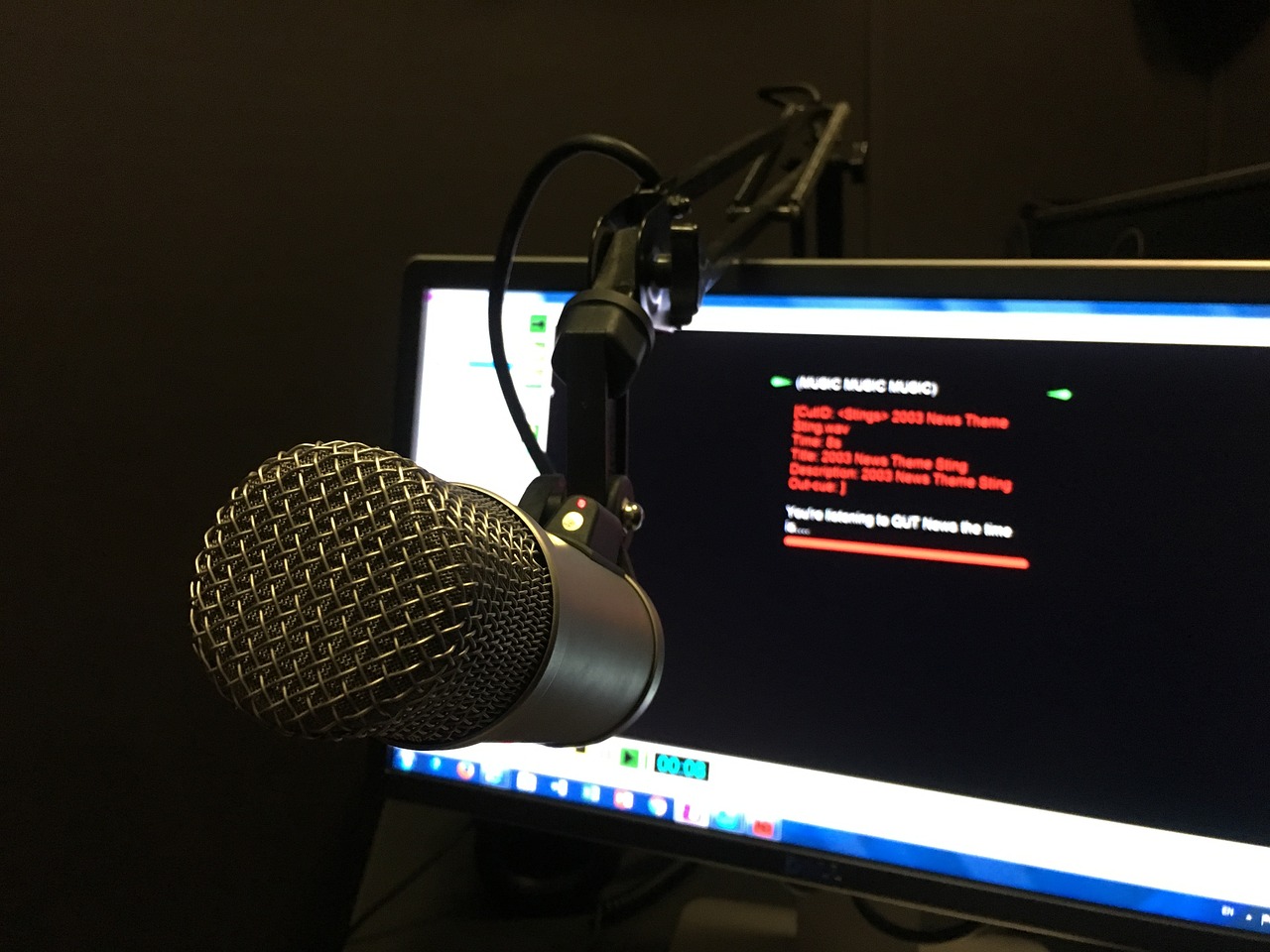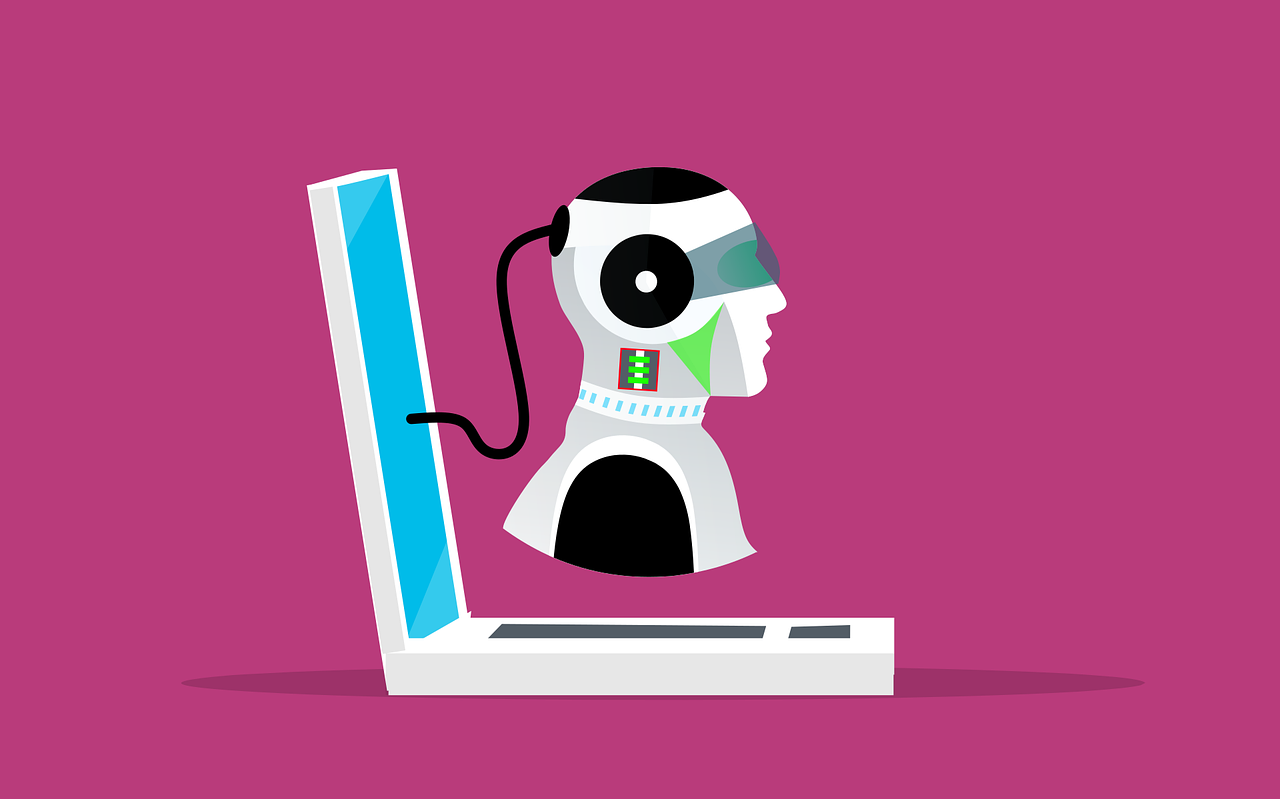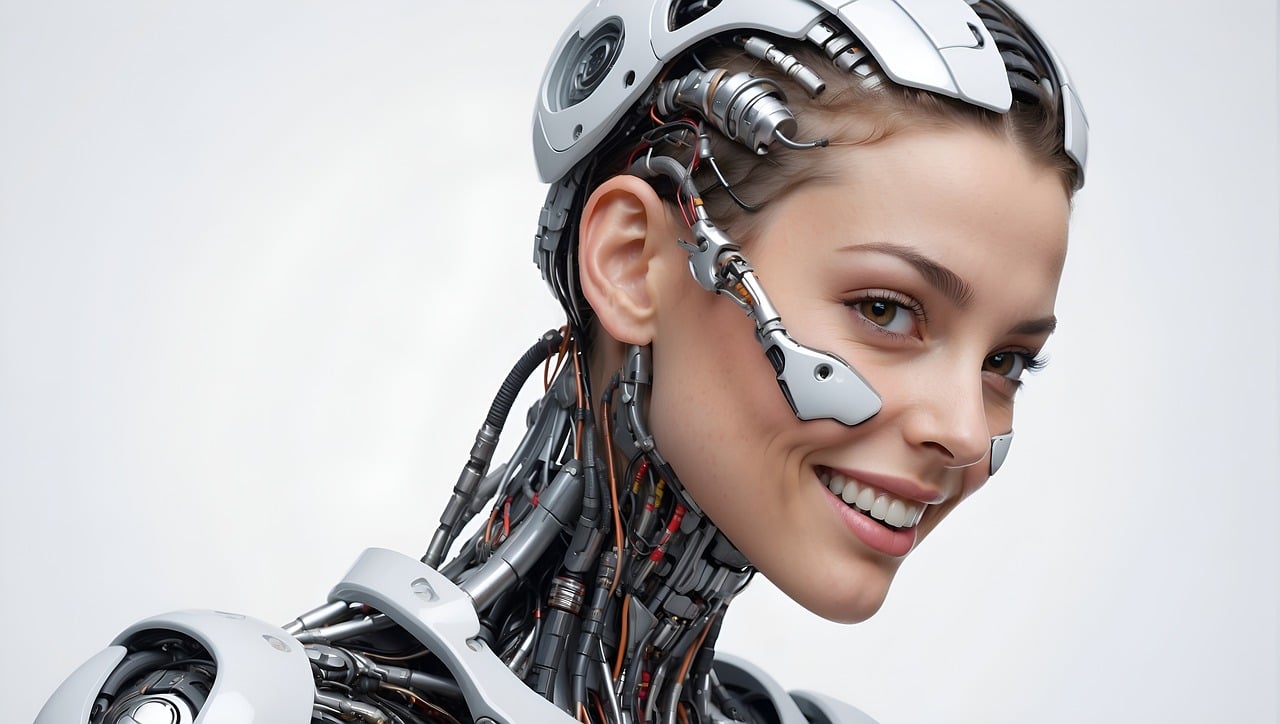Introduction

The power and possibilities of human speech have fascinated humankind for centuries. Yet it is only in recent years that we’ve begun to fully unlock its potential through AI voice technology. As these AI systems rapidly advance, they revolutionize the way we create and experience audio content across industries.
For audiobook narrators, voice actors, singers and more, AI represents an exciting new frontier brimming with opportunity, but also disruption. While AI voices aim to augment human creativity, concerns remain about authenticity and the replacement of human talent. Even so, this technology has progressed tremendously, giving us more natural, customizable and human-like computer voices than ever before.
Join us as we explore the capabilities of modern AI voice generators and how they are transforming roles and workflows within the audio industry. We’ll look at key developments powering this revolution, from deep learning techniques to advances in speech synthesis.AI voices have crossed an uncanny threshold, signaling major impacts ahead. Let’s examine what the future may hold as these systems continue rapidly evolving.
Brief History of AI Voice Tech

The development of AI voice technology has roots going back to the 1960s, with Bell Labs’ demonstration of the first computer speech synthesis system. This was what paved the way for the first commercial text-to-speech engines in the 1980s, though the robotic voices left much to be desired.
Things began to change rapidly in the late 2000s, thanks to breakthroughs in deep learning. In 2016, Google unveiled its WaveNet neural network, capable of generating strikingly human-like speech by modeling raw audio waveforms. Other tech giants soon followed, with neural text-to-speech systems like Amazon’s Polly, Microsoft’s Neural TTS, and Baidu’s Deep Voice.
Startups also jumped into the space, developing proprietary voice cloning and synthesis algorithms. Companies like Lyrebird, Modulate, Respeecher, and WellSaid Labs set out to make hyper-realistic synthetic voices. This ushered in a new generation of AI voice tech that offered unlimited potential for customization.
So in just a few decades, we’ve gone from robotic, almost incomprehensible speech synthesis to AI systems that can mimic voices with incredible precision. The rapid advances show no signs of slowing down either, as deep learning and big datasets continue to improve voice generation capabilities.
Customizable AI Voices
One of the most exciting aspects of AI voice generation is the ability to customize voices. Developers can now generate voices that sound remarkably human-like, with natural inflections and fluidity. But what sets AI voices apart is the ability to fine-tune these voices based on the needs of the project.
Customizing AI voices can mimic voices of real people, from celebrities to local radio hosts, tailoring the pitch, tone, accent, cadence, and other vocal qualities to match a target voice. This opens up possibilities like resurrecting the voice of a historical figure or letting consumers or content creators generate custom voices for their audio projects.
Voice cloning is one technique that allows developers to capture the distinctive qualities of a person’s voice to recreate it. After training the AI on hours of recordings of a single person talking, it can generate new speech that closely matches their vocal style.
You can adjust accents to fit the audience and context. AI voices can switch between accents and dialects based on pronunciation datasets they’ve trained on. This flexibility allows for global reach, with audio content that resonates across cultures and languages.
Overall, customizable AI voices grant creators and consumers more control over the final vocal product. As the technology continues advancing, expect even more fine-grained adjustment of pitch, tone, inflection and other nuances that capture the uniqueness of human voices.
AI Narration of Audiobooks
AI voice technology is revolutionizing audiobook production. Audiobook narration has traditionally been an expensive and time-consuming process, requiring long hours in the studio by trained voice actors. AI narration provides a faster and more cost-effective alternative.
With just a text file, AI voice models can synthesize high-quality audiobook narration, accurately conveying emotion and emphasis. The voices sound natural and human-like. Generating an entire audiobook in a fraction of the time and cost of hiring professional narrators enables the adaptation of more books into audio format and increases accessibility to audiobooks for more people.
AI narration also offers flexibility and personalization. Audiobook publishers can easily experiment with different voices to find the ideal narrator for a book. The tone and style of the voice can be customized. Listeners may even be able to select their preferred voice. AI promises to open new creative possibilities for audiobook creation.
Overall, AI-narrated audiobooks provide a scalable solution to meet growing consumer demand. The efficiency of automated synthesis allows audiobook publishers to greatly increase production volume without sacrificing audio quality. As the technology continues improving, AI narration is poised to transform audiobook publishing.
AI Voice Acting

One of the most exciting applications of AI voice tech is in the realm of voice acting and voiceovers. AI can now replicate human voices and speech patterns, opening up possibilities for AI-generated voiceovers in ads, cartoons, videos, and more.
Companies like Replica Studios, Veritone, and WellSaid Labs are training advanced AI models on hours of speech data from voice actors. This allows the AI to capture the nuances and emotional range of a person’s voice. The AI can then generate custom speech mimicking that voice’s inflections, accents, and style.
Voice actors may upload samples of their own voice so clients can license the AI version to create realistic synthetic speech. The AI voices can deliver scripted lines as if the voice actor recorded them naturally. This expands work opportunities for voice actors by enabling large-scale text-to-speech voiceovers.
AI voice acting also allows for more accessibility and localization. The same AI voice model can deliver translations that sound authentic in multiple languages. Animated films can utilize AI voices to dub characters in localized versions more efficiently.
As the tech improves, AI-powered voice acting could transform animation, gaming, audiobooks, and other voiceover-reliant industries. Brands may opt to license a famous voice for personalized interactions at scale. However, ethical concerns remain about impersonating real people’s voices without consent.
Overall, AI voice acting opens new creative possibilities but also displaces some human voiceover work. Responsible development of the tech and protections for voice actors will be important as adoption spreads.
AI Music Vocals

One of the most stunning AI voice applications is generating realistic singing voices. Companies like Replica Studios and Anthropic have developed AI models that can turn text into melodic vocals that mimic specific singers or musical styles.
The key to creating convincing AI singing is modeling the nuances of the human voice – pitch, timbre, vibrato, and dynamics. The AI analyses hours of a singer’s catalog to learn their rhythmic patterns, range, diction, and other vocal tendencies. It then uses this data to synthesize new vocals that capture the artist’s essence.
The results can be remarkably authentic, especially for short phrases. AI singing voices are now being used to create demos, backing vocals, chorus parts, and more. Game studios even use synthesized singing voices for characters in gaming worlds.
Looking ahead, AI singing could enable fully automated and customized song creation. By inputting lyrics and a selected genre or mood, someone with no musical training could potentially produce a studio-quality song with AI vocal arrangements. The technology still has room for improvement, but it’s an exciting glimpse into the future of music production.
AI Voice Assistants

AI voice assistants, such as Amazon’s Alexa, Google Assistant, and Apple’s Siri, demonstrate impressive natural conversation abilities and contextual awareness that was not possible just a few years ago. These virtual assistants can engage in free-flowing dialogue, understand different accents and voices, and maintain context to follow along during long conversations.
The conversational capabilities of modern voice assistants rely on deep learning and vast datasets. By analyzing millions of conversational samples, voice assistants can better understand natural speech patterns and respond appropriately based on context. This training helps voice assistants hold more human-like, free-flowing conversations without getting lost.
In addition, AI voice assistants showcase strong contextual awareness to understand commands and requests properly. They can take into account previous parts of a conversation, environmental background noise, the time of day, and other contextual factors to discern the true meaning behind users’ requests. This contextual awareness allows users to have more natural conversations without having to rigidly structure their sentences.
Looking ahead, continuous training on conversational datasets will likely expand the capabilities of AI voice assistants even further. With larger training sets, they may be able to handle more complex dialogues, engage in basic reasoning, and maintain context over long, winding conversations. This could lead to voice assistants that feel more human and allow for more productive, efficient interactions.
Challenges and Criticisms
While AI voice generators provide many new possibilities, the technology also faces some challenges and criticisms.
One concern is the lack of emotion and uniqueness in AI-generated voices. Since the voices are computer-generated, they can sound robotic and lack the natural inflections of real human speech. This makes them less suitable for content that requires conveying emotion, such as audiobook narration of fiction or voice acting. The synthetic voices also sound very similar, lacking distinctive vocal qualities.
There are also legal and ethical concerns around impersonating real people’s voices without consent and creating harmful fake audio content. The ability to mimic anyone’s voice with just a short sample raises red flags about how this technology could potentially be misused for fraud, fake news, or unauthorized voice cloning.
Some also criticize AI voice tech for threatening the livelihood of human voice actors and audio professionals. As the technology improves, it could reduce the need to hire voice talent for some projects, displacing people in the industry. This highlights the importance of considering the human impact as we develop more advanced AI.
While the technology shows much promise, these challenges serve as a reminder that we need to govern AI audio thoughtfully to ensure responsible, legal, and ethical implementation as it continues to evolve. Ongoing innovation should balance enabling new creative possibilities with safeguarding against misuse.
The Future of AI Audio
The possibilities for AI voice generation seem almost endless as the technology continues to advance rapidly. Here are some predictions and possibilities for the future of AI audio:
- More personalized and customizable voices – As the tech improves, AI voices will sound even more human-like and be highly customizable, allowing users to create a unique voice that fits their brand or project needs.
- Expanded use for audio books and e-learning – AI narration could provide reading options for niche topics and audiobooks in a variety of languages and accents at a low cost. This can increase accessibility to learning and literature.
- Voice cloning – AI audio may allow cloning anyone’s voice with their consent, opening possibilities for reviving past voices or allowing famous voices to narrate new works. However, ethical concerns exist around potential misuse.
- AI-generated music – AI composed and performed music is already emerging. Complete AI-generated songs, vocals, and instrumental tracks may become commonplace. The legal implications around royalties and intellectual property will need resolution.
- More interactive audio experiences – As conversational AI matures, audio interactions like podcast interviews could become more dynamic, with AI generating relevant follow-up questions and responses.
- New creative possibilities for audio content – AI audio generation lowers barriers, allowing indie creators, businesses and educators to easily produce high-quality, custom voice overs, audio books, songs and more. This can lead to an explosion in unique audio content.
- Mainstream adoption of AI voice assistants – As smart assistants like Alexa and Siri improve, they may become ubiquitous in homes, vehicles and devices. Seamless, conversational interactions could change how we seek information and complete tasks.
The future seems bright for AI to expand the possibilities for generating and consuming audio content in new creative ways. But appropriate regulations and ethical guidelines will be important for balancing innovation with responsible implementation.
Conclusion
The emergence of AI voice generation represents a seismic shift in the world of audio content creation. As we’ve explored, these advanced technologies allow for the rapid production of natural sounding speech and vocals that can be customized and tailored to any project. From providing narration for audiobooks to generating original music, AI voices have enormous potential to transform how we produce and experience audio media.
However, as with any new technology, there are valid concerns around ethics, fairness, and unintended consequences that must be carefully considered as this field continues to evolve. The audio industry will need to establish best practices and guidelines around the appropriate use of AI voices in professional content. With responsible innovation and an eye towards serving creativity rather than replacing it, AI audio paves the way for exciting new possibilities in entertainment, information services, personal assistance, and beyond.
The future looks bright for generative voices and synthesized content. But success will depend on continuing to push the envelope of what’s possible while also cultivating uniquely human talents. If we can strike that balance, AI audio could usher in a creative renaissance, allowing more people to develop and share their unique voices with the world. The potential for human-AI collaboration in this space is tremendously exciting.
But we must ensure the technology is built and used in service of creativity, expanding access and opportunity rather than limiting it. If pioneers in AI audio remain committed to responsible stewardship and innovation, the future of synthetic media will be defined not by what tech makes possible, but by what we collectively choose to make of it.
Read more interesting stuff here or more about speech synthesis h



